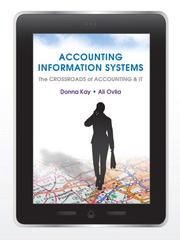You are asked to apply the free cash flow valuation model to
calculate the intrinsic price of Nike.
On Canvas you can find the annual report by Nike for year-end May 31, 2015. In page 110 of
that annual report you can find the Statements of Cash Flows for years 2013, 2014, and
2015.
In addition, you are provided the following information and assumptions:
? Nike's applicable tax rate is 35%.
? Nike's interest receipts for fiscal years 2013, 2014 & 2015 are $6, $8 and $12
million, respectively.
? Nike's cost of capital is 7.5%.
? Nike's free cash flow is expected to grow at 4% per annum for from 2015 to 2016
and continue to grow at that rate up to 2020.
? Nike's free cash flow will grow at 2% on average per annum from 2020 to 2021
onwards.
? The total value of liabilities can be obtained from the balance sheet.
? At year-end 2015, Nike had 855,351,589 common shares outstanding.
Required:
You are required an Excel spreadsheet, similar to those provided in Week 3
reading material, to perform the following tasks:
1. Calculate the free cash flows for fiscal years 2013, 2014 and 2015.
2. Then, calculate the intrinsic equity value per share of Nike Inc. as of May. 31, 2015 using
the discounted cash flow valuation method.
3. Explain the limitations of applying the cash flow valuation model
specifically
NIKE, Inc. Consolidated Statements of Cash Flows Year Ended May 31, (In millions) 2015 2014 2013 Cash provided by operations: Net income $ 3,273 $ 2,693 $ 2,472 Income charges (credits) not affecting cash: Depreciation 606 518 438 Deferred income taxes (1 13) (11) 20 Stock-based compensation (Note 11) 191 177 174 Amortization and other 43 68 64 Net foreign currency adjustments 424 56 66 Net gain on divestitures (124) Changes in certain working capital components and other assets and liabilities: (Increase) decrease in accounts receivable (216) (298) 142 (Increase) in inventories (621) (505) 219 (Increase) in prepaid expenses and other current assets (144) (210) (28) Increase in accounts payable, accrued liabilities and income taxes payable 1237 525 27 Cash provided by operations 4,680 3,013 3,032 Cash used by investing activities: Purchases of short-term investments (4,936) (5,386) (4, 133) Maturities of short-term investments 3.655 3,932 1,663 Sales of short-term investments 2,216 1,126 1,330 Investments in reverse repurchase agreements (150) Additions to property, plant and equipment (963) (880) 598 Disposals of property, plant and equipment 3 3 14 Proceeds from divestitures 786 (Increase) in other assets, net of other liabilities (2 (2) Cash used by investing activities (175) (1,207) 940 Cash used by financing activities: Net proceeds from long-term debt issuance 986 Long-term debt payments, including current portion (7) (60) (49) ( Decrease) increase in notes payable (63) 75 10 Payments on capital lease obligations (19) (17) Proceeds from exercise of stock options and other stock issuances 514 383 313 Excess tax benefits from share-based payment arrangements 218 132 72 Repurchase of common stock 2,534) 2,628 (1,674) Dividends - common and preferred (899) (799) (703) Cash used by financing activities (2,790) (2,914) (1,045) Effect of exchange rate changes on cash and equivalents (83) (9) 36 Net increase (decrease) in cash and equivalents 1,632 (1,1 17 1,083 Cash and equivalents, beginning of year 2,220 3,337 2,254 CASH AND EQUIVALENTS, END OF YEAR $ 3,852 $ 2.220 $ 3,337 Supplemental disclosure of cash flow information: Cash paid during the year for: Interest, net of capitalized interest $ 53 $ 53 $ 20 Income taxes 1,262 856 702 Non-cash additions to property, plant and equipment 206 167 137 Dividends declared and not paid 240 209 188 The accompanying Notes to the Consolidated Financial Statements are an integral part of this statement.Free cash flow valuation: example NY State Electric & Gas Corp 1987 1988 1989 1990 1991 1992 1993 1994 1995 1996 CFO 602 460 381 403 379 499 533 531 534 CPX 207 191 211 301 243 302 216 160 212 FCF 395 269 170 102 136 197 317 371 322 Shares outstanding 55.73 r 0.085 PV of FCF 364 229 133 73.6 90.4 121 179 193 155 PV of Continuing Value 1818 Total Firm Value 3355 BV of Debt and Preferred Stock 2290 Equity Value 1065 Projected Value per share 19.11 Actual Value per share 20.88








